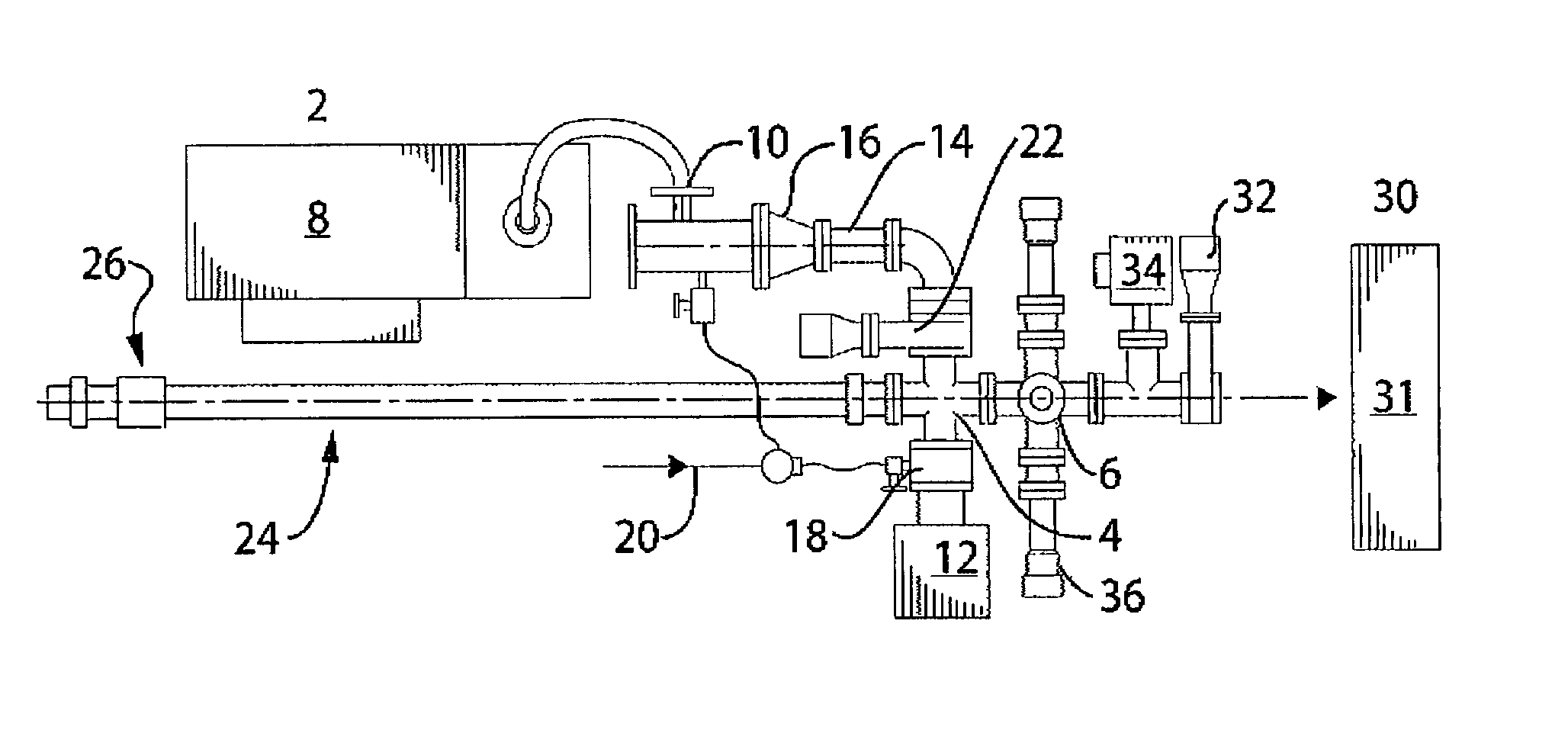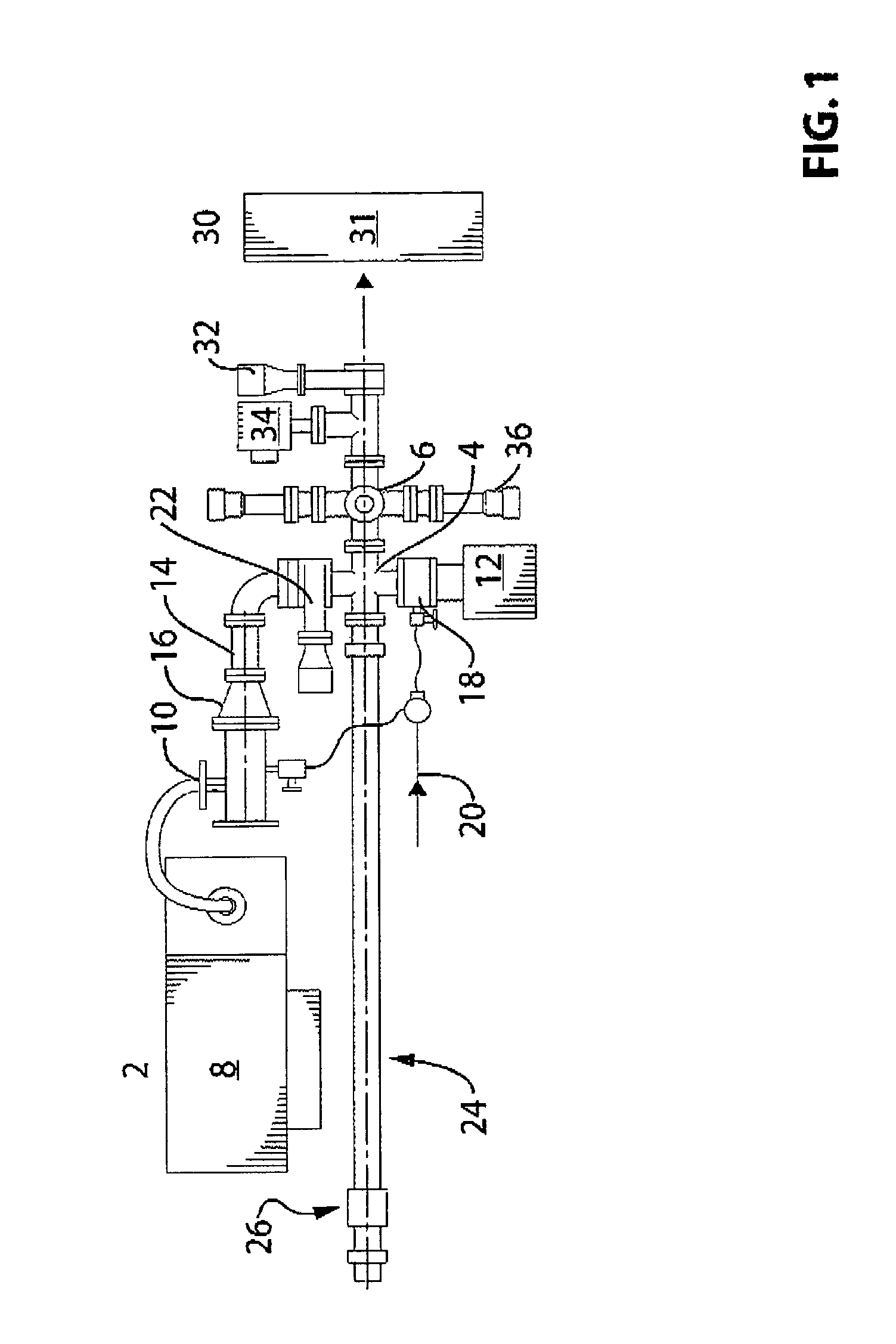Conditioning chamber for metallurgical surface science
a conditioning chamber and surface technology, applied in the field of conditioning chambers, can solve the problems of long process time, high risk of adverse effects during transport to the instrument, and high risk of adverse effects on the condition of the examination chamber uhv
- Summary
- Abstract
- Description
- Claims
- Application Information
AI Technical Summary
Benefits of technology
Problems solved by technology
Method used
Image
Examples
Embodiment Construction
[0044]Referring to FIG. 1, a conditioning chamber device 2 comprises a housing 4, enclosing a chamber 6 which can be brought to an ultra high vacuum (UHV) condition, at or below 10−7 Torr. To achieve this condition, a low vacuum roughing pump 8, a turbomolecular pump 10 and an ion pump 12 are provided which are operable in sequence. The pumps 8, 10 and 12 are connected to the chamber 6 by suitable known linkage components (not specifically identified). As shown in FIG. 1, the first two pumps 8 and 10 are located so as to be connected to the chamber 6 by a first gate valve 22, and the third pump 12 is located so as to be connected to the chamber 6 at a second location, shown in FIG. 1 as adjacent to an up-to-air valve 18, and on the opposite side of the chamber 6 from the connection of the first two pumps 8 and 10. However, any suitable arrangement of the pumps 8, 10 and 12 can be selected such that the pumps can be operated and controlled effectively. Inert gas connection lines 20 f...
PUM
| Property | Measurement | Unit |
|---|---|---|
| pressure | aaaaa | aaaaa |
| pressure | aaaaa | aaaaa |
| temperature | aaaaa | aaaaa |
Abstract
Description
Claims
Application Information
 Login to View More
Login to View More - R&D
- Intellectual Property
- Life Sciences
- Materials
- Tech Scout
- Unparalleled Data Quality
- Higher Quality Content
- 60% Fewer Hallucinations
Browse by: Latest US Patents, China's latest patents, Technical Efficacy Thesaurus, Application Domain, Technology Topic, Popular Technical Reports.
© 2025 PatSnap. All rights reserved.Legal|Privacy policy|Modern Slavery Act Transparency Statement|Sitemap|About US| Contact US: help@patsnap.com



